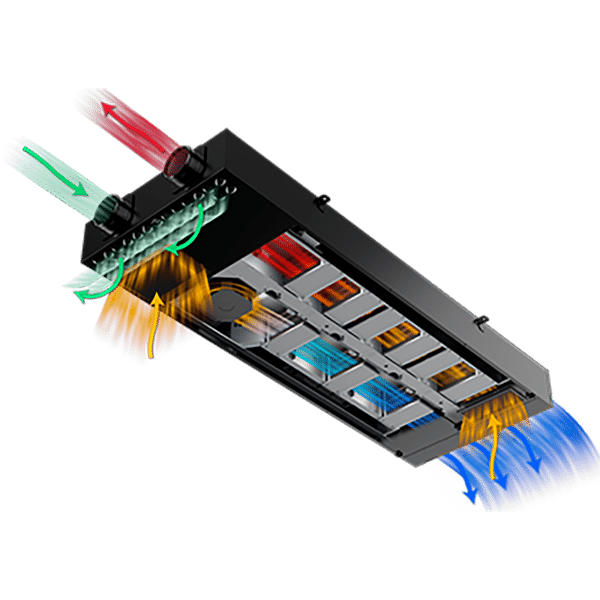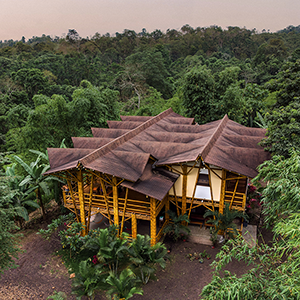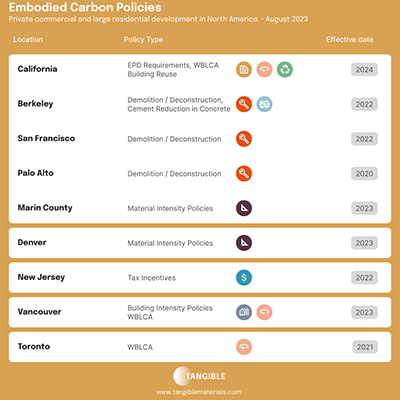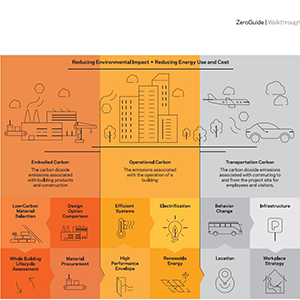At the Frontier of Climate Action in Architecture
by Efrie Escott and Ryan Welch
KieranTimberlake has long believed it is our collective ethical obligation to protect our environment, which increasingly means focusing on radically reducing our carbon emissions to avoid the worst impacts of climate change.
Our initial forays into embodied carbon accounting in 2008 were driven by a desire to prove the effectiveness of a circular approach to material resources through design for disassembly, recovery, and reuse. And while we confirmed with two case study houses – Loblolly House and Cellophane House™ – that designing for material recovery led to significant lifecycle impact reductions, we also discovered just how difficult it was to generate an accurate bill-of-materials for a building, even with a detailed building information model.
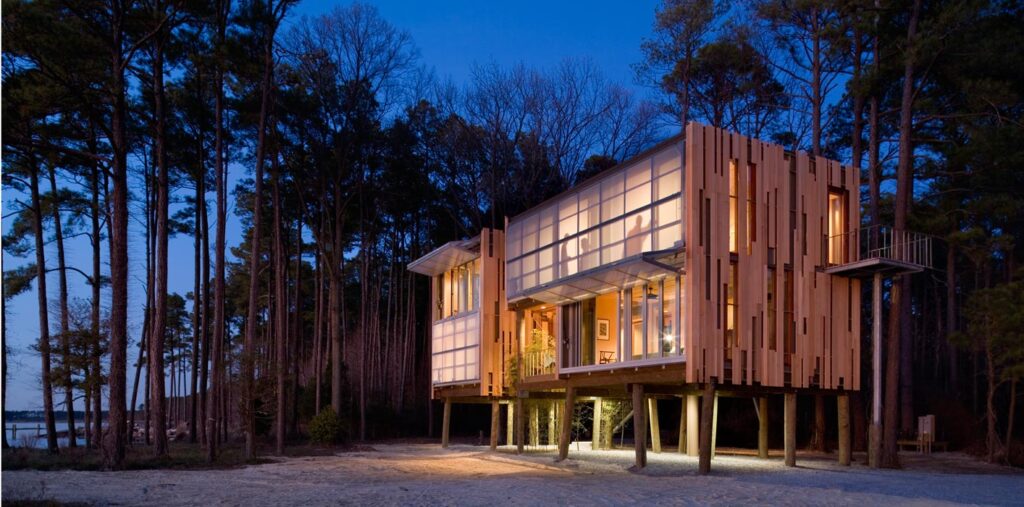
Loblolly House, a case study house designed for significant lifecycle impact reductions that helped lay the basis for Tally
Our transdisciplinary team of researchers, comprising architects, ecologists, application developers, and LCA practitioners (including CLF Senior Researcher Stephanie Carlisle) also realized just how limited high-quality LCA data for building materials was at the time. In response to these challenges, we worked together to create Tally®, the first BIM-integrated life cycle assessment tool. Tally was crafted with designers in mind, allowing LCA data and quantity-survey methods to reside and evolve alongside our models so that at any point in the design we can ask, “Where are the greatest opportunities for impact reductions?” and “How do these options I’m considering compare in terms of environmental impacts?” In the course of applying Tally to our projects, we found that to achieve substantial embodied carbon reductions, we had to consider embodied carbon earlier in design before the crucial decisions are made.
LCA is still relatively new to AEC firms compared to design-integrated analysis practices such as energy and daylight modeling. Since releasing Tally in 2013, we found that more than just distributing a tool, we also needed to steward LCA’s adoption in academia and industry.
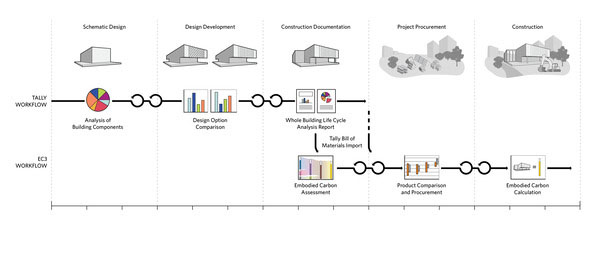
Tally®, the first BIM-integrated life cycle assessment tool
Over the last decade, we’ve shared our applied LCA wisdom with colleagues and peer firms through mentoring and formal LCA training; we’ve presented case studies to wider audiences through webinars and speaking engagements at local and national conferences, and we’ve served on working groups within AIA and USGBC to help define standards and best practice guidance for whole building LCA. More recently, we helped to ensure Tally will reach a broader audience with a transfer and ongoing support to the nonprofit organization Building Transparency, to support their mission “to provide the open access data and tools necessary to enable broad and swift action across the building industry in addressing embodied carbon’s role in climate change.”
Within our own office, we strive to demonstrate the frontier of what is possible for climate action within architecture with projects like OpenHome: a prefabricated system for customizable homes, designed to achieve lifecycle zero carbon. Although the current iterations are not yet embodied carbon neutral, in each iteration, the energy-positive production feeding back into the local grid has offset the remaining embodied carbon to achieve lifecycle carbon neutrality.
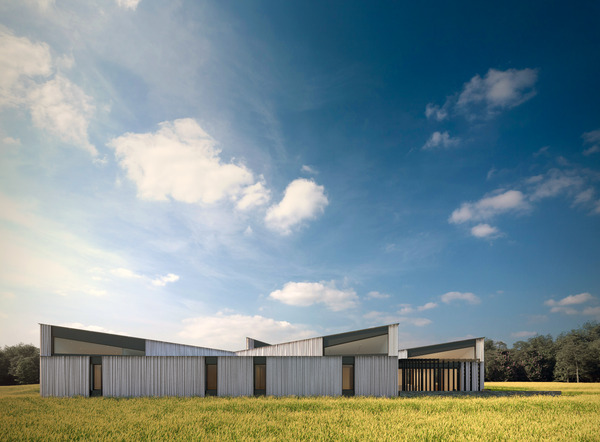
OpenHome: a prefabricated system for customizable homes, designed to achieve lifecycle zero carbon
After adopting LCA modeling to address embodied carbon reductions on all of our firm’s projects, we realized we needed to reframe our energy modeling aspirations on similar grounds. While we have become accustomed to setting energy performance targets around site energy use intensity and utility cost, we now recognize that energy resources – particularly those supplying electricity to the local energy grid – are crucially important in shaping how a building’s energy use impacts the environment.
We now apply grid emission factors – current and projected – to energy model findings to estimate operational carbon emissions over each building’s life. Combining these results with embodied carbon findings from our LCA models allows us to form a total lifecycle carbon picture that helps us set achievable goals for every project and engage clients in discussions of what it takes to get to zero, including electrification, clean power purchasing, and carbon offsets. This combined picture has also helped us identify where we should direct our design attention. In regions where we’ve benefitted from remarkably clean energy grids, we find that most lifecycle emissions may come from embodied carbon in year one.
We believe monitoring and measurement are keys to improvement. In addition to being signatories to the AIA 2030 Commitment and US Architects Declare, we have an internal working group that tracks our progress on these commitments and those published in our Sustainability Action Plan. While we look at many topics to define sustainability, including environmental justice and material impacts on human health, a core focus is on reducing our carbon emissions, including operational carbon, embodied carbon, and the carbon emitted during the design process.
To do so, we conduct LCA and energy models on every building we design and we track the carbon associated with design team travel. These findings live on an interactive web dashboard, where data and high-level insights are made available to all of our colleagues. We strive to live our message, working within a renovated bottling plant to create a minimalist carbon footprint.

KieranTimberlake’s offices in a renovated bottling plant

Efrie Escott, Associate at KieranTimberlake

Ryan Welch, Principal at KieranTimberlake
We now apply grid emission factors – current and projected – to energy model findings to estimate operational carbon emissions over each building’s life. Combining these results with embodied carbon findings from our LCA models allows us to form a total lifecycle carbon picture that helps us set achievable goals for every project and engage clients in discussions of what it takes to get to zero, including electrification, clean power purchasing, and carbon offsets.


